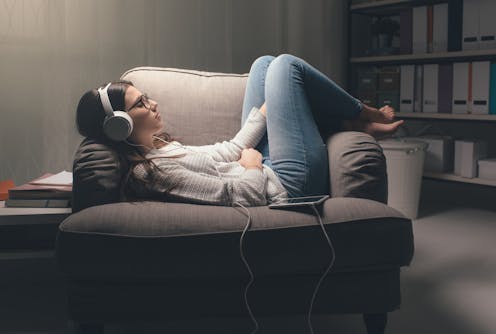Art has long been recognized as a powerful tool for self-expression and emotional release. It allows individuals to communicate their thoughts, feelings, and experiences in a way that words alone cannot capture. This connection between art and mental health has led to the development of a therapeutic approach known as art therapy.
Art therapy is a form of psychotherapy that utilizes the creative process of making art to improve and enhance the physical, mental, and emotional well-being of individuals. It is based on the belief that the act of creating art can be healing and transformative, providing individuals with a means to explore their inner world, express their emotions, and gain insight into their thoughts and feelings.
What is Art Therapy and How Does it Work?
Art therapy is a form of therapy that uses art materials and creative techniques to help individuals explore their emotions, improve self-esteem, manage stress, and develop coping skills. The goals of art therapy are to promote self-discovery, personal growth, and emotional healing.
The process of art therapy typically involves working with a trained art therapist who guides individuals through various art-making activities. These activities may include drawing, painting, sculpting, collage-making, or any other form of artistic expression. The art therapist provides a safe and supportive environment for individuals to explore their thoughts and feelings through the creative process.
There are different types of art therapy that can be used depending on the needs and preferences of the individual. Some examples include:
– Gestalt art therapy: This approach focuses on the integration of mind, body, and emotions through the creative process. It emphasizes self-awareness and personal growth.
– Analytic art therapy: This approach combines art-making with psychoanalytic techniques to explore unconscious thoughts and emotions. It aims to bring about insight and understanding.
– Expressive arts therapy: This approach incorporates various forms of artistic expression, such as music, dance, drama, and writing, in addition to visual art. It encourages individuals to explore their emotions and experiences through multiple creative outlets.
The Benefits of Art Therapy in Combating Depression
Depression is a common mental health condition that can have a significant impact on an individual’s quality of life. Art therapy has been shown to be an effective tool in combating depression and improving overall mental well-being.
Art therapy can help individuals with depression by providing a means of self-expression and emotional release. It allows individuals to externalize their feelings and experiences through the creative process, which can be cathartic and healing. Creating art can also provide a sense of accomplishment and self-worth, which can help combat the negative thoughts and low self-esteem often associated with depression.
Research has shown that art therapy can be an effective treatment for depression. A study published in the Journal of Affective Disorders found that art therapy significantly reduced depressive symptoms in adults with major depressive disorder. Another study published in the Journal of the American Art Therapy Association found that art therapy improved mood and reduced symptoms of depression in adolescents.
How Art Therapy Helps to Reduce Stress and Anxiety
Stress and anxiety are common experiences that can have a negative impact on mental health. Art therapy has been shown to be an effective tool in reducing stress and anxiety and promoting relaxation.
Art therapy can help individuals with stress and anxiety by providing a creative outlet for self-expression and emotional release. Engaging in the creative process can help individuals relax, focus their attention, and reduce feelings of tension and worry. Creating art can also provide a sense of control and mastery, which can help individuals feel more empowered and less overwhelmed by stressors.
Research has shown that art therapy can be an effective treatment for stress and anxiety. A study published in the Journal of Clinical Psychology found that art therapy significantly reduced anxiety symptoms in adults with generalized anxiety disorder. Another study published in the Journal of Traumatic Stress found that art therapy reduced symptoms of post-traumatic stress disorder (PTSD) in veterans.
The Role of Creativity in Art Therapy
Creativity plays a central role in art therapy. It is through the creative process that individuals are able to explore their thoughts and feelings, gain insight into their experiences, and find new ways of expressing themselves.
Creativity is an essential aspect of art therapy because it allows individuals to tap into their imagination and intuition. It encourages individuals to think outside the box, take risks, and explore new possibilities. This can be particularly beneficial for individuals with mental health concerns, as it can help them break free from negative thought patterns and find new ways of approaching challenges.
In addition to promoting self-expression and emotional release, creativity can also help individuals develop problem-solving skills, enhance self-esteem, and foster a sense of personal growth. By engaging in the creative process, individuals can gain a greater sense of self-awareness and self-acceptance, which can contribute to improved mental well-being.
Case Studies: Real-Life Examples of Art Therapy Success
Art therapy has been shown to have a positive impact on the mental health of individuals across a wide range of ages and backgrounds. Here are some real-life examples of individuals who have benefited from art therapy:
– Sarah, a 35-year-old woman struggling with depression, found solace in art therapy. Through the process of creating art, she was able to express her emotions and gain insight into the underlying causes of her depression. Over time, Sarah developed coping skills and a greater sense of self-worth, which helped her manage her depression more effectively.
– John, a 12-year-old boy with anxiety, found relief through art therapy. By engaging in the creative process, he was able to externalize his worries and fears and gain a sense of control over his anxiety. John learned relaxation techniques through art therapy, which he could use in other areas of his life to manage his anxiety.
– Maria, a 50-year-old woman recovering from trauma, found healing through art therapy. By creating art, she was able to process her traumatic experiences and gain a sense of empowerment. Maria developed a greater sense of self-compassion and resilience through art therapy, which helped her on her journey to recovery.
These case studies highlight the transformative power of art therapy in promoting mental wellness. They demonstrate how art therapy can provide individuals with a safe and supportive space to explore their emotions, gain insight into their experiences, and develop coping skills.
Art Therapy Techniques: Exploring Different Approaches
There are various art therapy techniques and approaches that can be used to address different mental health concerns. Here are some examples:
– Free drawing: This technique involves allowing individuals to draw freely without any specific guidelines or expectations. It encourages spontaneous expression and can be particularly helpful for individuals who struggle with self-expression or have difficulty verbalizing their thoughts and feelings.
– Collage-making: This technique involves creating a collage using images, words, and other materials. It can be used to explore themes or emotions that are difficult to express verbally. Collage-making can also be a useful tool for individuals who struggle with perfectionism or have difficulty starting a project.
– Guided imagery: This technique involves using visualizations and guided prompts to stimulate the imagination and create artwork based on the imagery. It can be particularly helpful for individuals who have difficulty accessing their emotions or need support in exploring specific themes or issues.
– Sculpture: This technique involves creating three-dimensional artwork using various materials such as clay, wire, or found objects. Sculpture can be a powerful tool for individuals who prefer working with their hands or need a tactile outlet for self-expression.
These are just a few examples of the many art therapy techniques and approaches that can be used. The specific techniques used will depend on the needs and preferences of the individual, as well as the goals of the therapy.
The Importance of Finding the Right Art Therapist
Finding a qualified and experienced art therapist is essential for a successful art therapy experience. A skilled art therapist will have the knowledge and expertise to guide individuals through the creative process and provide appropriate support and guidance.
When looking for an art therapist, it is important to consider their qualifications, experience, and approach to therapy. Art therapists should have a master’s degree in art therapy or a related field, as well as certification from a recognized professional organization such as the American Art Therapy Association.
It is also important to find an art therapist who is a good fit for your needs and preferences. This may involve scheduling an initial consultation or interview to discuss your goals and expectations for therapy. It is important to feel comfortable and supported by your art therapist, as this will contribute to a positive therapeutic relationship.
Combining Art Therapy with Other Forms of Treatment for Depression
Art therapy can be used in conjunction with other forms of treatment for depression to enhance its effectiveness. It can be particularly beneficial when combined with talk therapy, medication, or other evidence-based treatments.
Art therapy can provide individuals with an additional means of self-expression and emotional release that complements traditional talk therapy. It can also help individuals gain insight into their thoughts and feelings, which can be useful in the therapeutic process.
In addition to talk therapy, medication can also be an important component of treatment for depression. Art therapy can help individuals manage their symptoms and cope with side effects of medication by providing a creative outlet for self-expression and emotional release.
How to Incorporate Art Therapy into Your Daily Routine
Incorporating art therapy into your daily routine can be a powerful tool for promoting mental wellness. Here are some tips on how to make art therapy a regular practice:
– Set aside dedicated time: Schedule regular time in your day or week for art therapy. This can be as little as 15 minutes or as long as several hours, depending on your schedule and preferences.
– Create a dedicated space: Set up a space in your home or workplace where you can engage in art therapy. This can be a small corner of a room or an entire studio, depending on the available space.
– Gather art materials: Stock up on art materials that you enjoy using. This can include paints, brushes, pencils, markers, clay, or any other materials that inspire you.
– Experiment with different techniques: Try out different art therapy techniques and approaches to find what works best for you. Don’t be afraid to experiment and explore new possibilities.
– Practice self-care: Use art therapy as a form of self-care and self-expression. Focus on the process of creating art rather than the end result, and allow yourself to enjoy the experience without judgment or expectations.
The Power of Art Therapy in Promoting Mental Wellness
Art therapy is a powerful tool for promoting mental wellness and improving overall well-being. It provides individuals with a means of self-expression, emotional release, and personal growth. Through the creative process, individuals can explore their thoughts and feelings, gain insight into their experiences, and develop coping skills.
Art therapy has been shown to be effective in combating depression, reducing stress and anxiety, and promoting relaxation. It can be used in conjunction with other forms of treatment for mental health concerns to enhance their effectiveness.
By incorporating art therapy into your daily routine, you can experience the transformative power of creativity in promoting mental wellness. Whether you are struggling with depression, anxiety, or simply looking for a way to express yourself and relax, art therapy can provide a safe and supportive space for self-discovery and healing. Consider giving art therapy a try and see how it can positively impact your mental health.
Find out how Torongo Therapyplus can help you with your needs. Get in touch with us at smile@torongo.life, or call us on 02 8809 9965.































